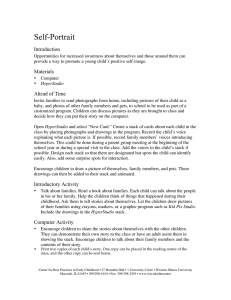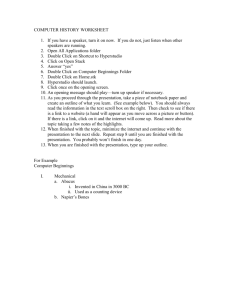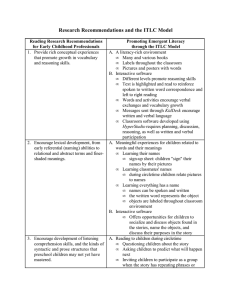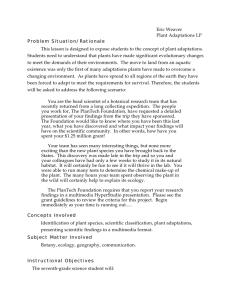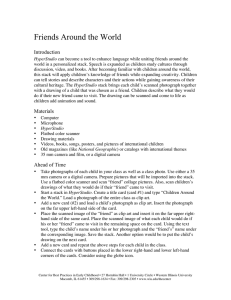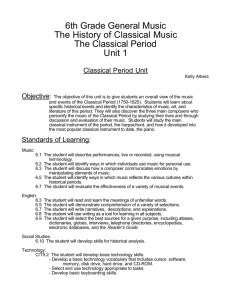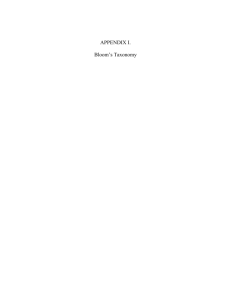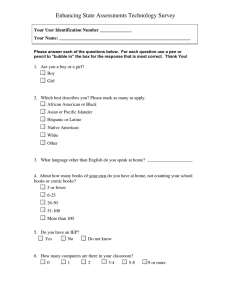HyperStudio
advertisement
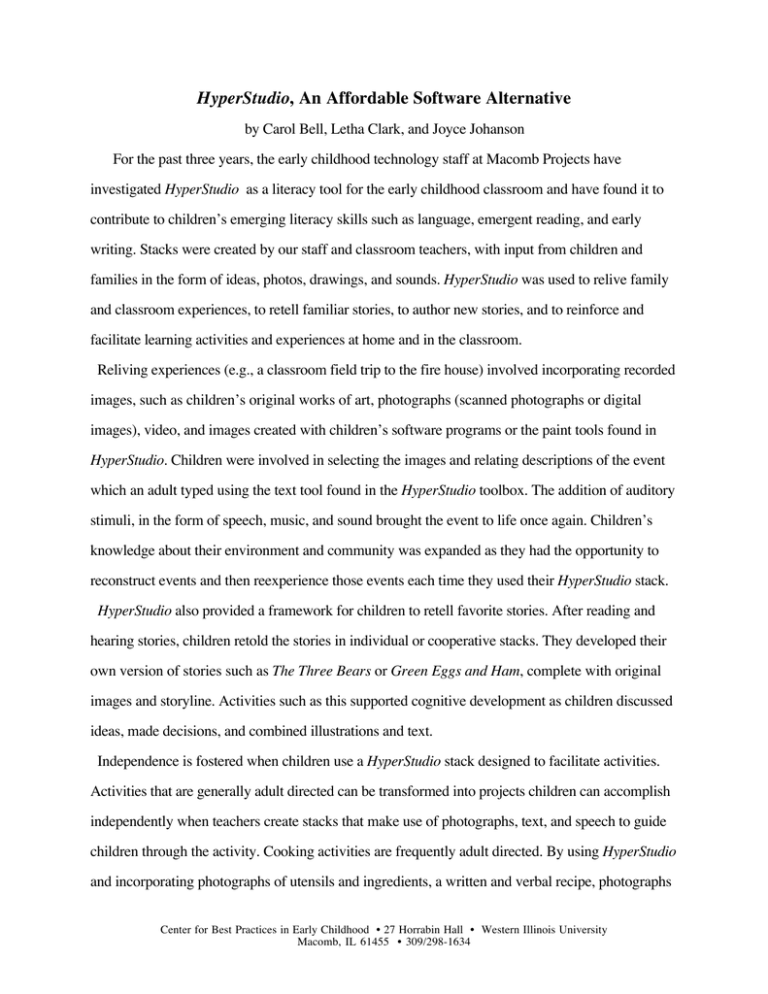
HyperStudio, An Affordable Software Alternative by Carol Bell, Letha Clark, and Joyce Johanson For the past three years, the early childhood technology staff at Macomb Projects have investigated HyperStudio as a literacy tool for the early childhood classroom and have found it to contribute to children’s emerging literacy skills such as language, emergent reading, and early writing. Stacks were created by our staff and classroom teachers, with input from children and families in the form of ideas, photos, drawings, and sounds. HyperStudio was used to relive family and classroom experiences, to retell familiar stories, to author new stories, and to reinforce and facilitate learning activities and experiences at home and in the classroom. Reliving experiences (e.g., a classroom field trip to the fire house) involved incorporating recorded images, such as children’s original works of art, photographs (scanned photographs or digital images), video, and images created with children’s software programs or the paint tools found in HyperStudio. Children were involved in selecting the images and relating descriptions of the event which an adult typed using the text tool found in the HyperStudio toolbox. The addition of auditory stimuli, in the form of speech, music, and sound brought the event to life once again. Children’s knowledge about their environment and community was expanded as they had the opportunity to reconstruct events and then reexperience those events each time they used their HyperStudio stack. HyperStudio also provided a framework for children to retell favorite stories. After reading and hearing stories, children retold the stories in individual or cooperative stacks. They developed their own version of stories such as The Three Bears or Green Eggs and Ham, complete with original images and storyline. Activities such as this supported cognitive development as children discussed ideas, made decisions, and combined illustrations and text. Independence is fostered when children use a HyperStudio stack designed to facilitate activities. Activities that are generally adult directed can be transformed into projects children can accomplish independently when teachers create stacks that make use of photographs, text, and speech to guide children through the activity. Cooking activities are frequently adult directed. By using HyperStudio and incorporating photographs of utensils and ingredients, a written and verbal recipe, photographs Center for Best Practices in Early Childhood • 27 Horrabin Hall • Western Illinois University Macomb, IL 61455 • 309/298-1634 and video of stages in the process, and clues, tips, and suggestions, teachers can produce a childfriendly stack. Transferring responsibility for the activity from the adult to the child promotes cooperation, discussions, and socialization. HyperStudio is a product-oriented program, but children are heavily invested in the process involved in creating HyperStudio stacks. Children can be involved in initial planning, gathering materials, discussing content, making decisions, implementing ideas, and producing a stack with very little assistance from adults. Our experiences demonstrate that even very young children can be actively involved in each stage. Initial planning may involve a brainstorming session with children in a search for possible topics, ideas, and design. Gathering materials may include taking photographs, producing images, dictating or composing text, and videotaping. Discussing content involves all the children as they make decisions about the gathered materials, discuss how the materials fit into the design, and debate possible changes and revisions. As children implement ideas, they assemble the pieces to make a whole. These pieces may include sounds, images, video, links, animation, buttons, and transition effects. As they produce a stack, children are involved in evaluating the aesthetic qualities of the stack, the organization of the cards, the original ideas they proposed, and suggesting any necessary revisions. The steps involved in stack production reinforce some of the basic emergent literacy concepts: words and pictures have meaning and can be used to tell stories; stories have sequence, a beginning, middle, and end; stories have characters, settings, and actions; each spoken word can be written using letters of the alphabet). HyperStudio is available from Roger Wagner Publishing, Inc., 1050 Pioneer Way-Suite P, El Cajon, CA 92020. 800-HYPERSTUDIO; 619-442-0522 or (FAX) 619-442-0525. Center for Best Practices in Early Childhood • 27 Horrabin Hall • Western Illinois University Macomb, IL 61455 • 309/298-1634
